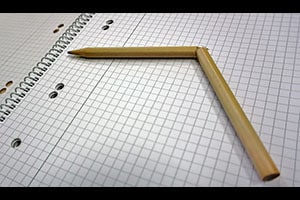 A language disorder is an alteration that threatens linguistic communication . These disturbances affect the person in linguistic matters (whether to produce, encode, decode and/or understand messages) and in other aspects, such as academic performance.
A language disorder is an alteration that threatens linguistic communication . These disturbances affect the person in linguistic matters (whether to produce, encode, decode and/or understand messages) and in other aspects, such as academic performance.
Among language disorders we can find dysorthography or dyslexic dysgraphia . It is an anomaly linked to spelling that leads the individual to face difficulties when writing correctly .
Dysorthography, therefore, does not alter the spelling or layout of words. What it does is influence how the subject writes the terms in terms of spelling rules.
There are several causes that can cause dysorthography, such as problems in auditory, visual or spatio-temporal perception; problems articulating phonemes ; or an intellectual deficit. Dysorthography can even be due to a pedagogical reason or lack of motivation.
When dysorthography affects the conversion of phonemes (sounds) to graphemes (written characters) or phonological creation, it is called natural dysorthography . On the other hand, if it is associated only with spelling rules, it is arbitrary disorthography .
Although dysorthography is not a problem whose severity puts the subject's health at risk, it can considerably hinder their development in society. In the student environment, for example, aptitude tests are common, and a skill related to writing can put you at a disadvantage from the beginning. To get a job, from preparing the resume to writing business documents, the lack of control over spelling correction is not ideal.
Let's see below some of the most common symptoms of dysorthography, which we sometimes overlook believing that they are not worthy of importance or we attribute them to a lack of will on the part of the person who exhibits them:
* phoneme substitution : this can occur because two phonemes are articulated in a similar way, something that happens with the pairs fy , pyb or tyd , among others;
 * omission : sometimes a consonant is omitted from a pair that belong to the same syllable ("cata" instead of "letter"), other times letters are omitted that lose strength when pronouncing the word (the final "s" of plurals ) or entire syllables are eliminated. Another very common case is the omission of the letter "h", since in our language it is silent unless it is found after the "c". The most striking is the omission of an entire word;
* omission : sometimes a consonant is omitted from a pair that belong to the same syllable ("cata" instead of "letter"), other times letters are omitted that lose strength when pronouncing the word (the final "s" of plurals ) or entire syllables are eliminated. Another very common case is the omission of the letter "h", since in our language it is silent unless it is found after the "c". The most striking is the omission of an entire word;
* addition : these are cases similar to the previous ones, but opposite. Sometimes letters are added (“albeldrío” instead of “albedrío”), others syllables are added (“tomatate” instead of “tomato”) and other times complete words;
* inversion : the order of two letters is exchanged ("burto" instead of "bruto"), two syllables ("cacebera" instead of "cabecera") or two words;
* substitution by similarity : those letters that are graphically very similar can be confused in a case of dysorthography (the "b" and the "d", the "q" and the "p");
* word confusion : in this case the meanings are different depending on the phoneme, as happens with "throw away" and "vote."
Treatment of dysorthography can be carried out in different ways. According to specialists, it is key that the pedagogue helps the person develop mechanisms to fix and evoke the correct writing of words. It is also essential to encourage exercises and practices to achieve retention of the rules.
Before defining the treatment , it is key to determine the type of dysorthography. Deficiencies can be recorded in the acquisition of spelling , language articulation , etc., so assistance must focus on different aspects.
